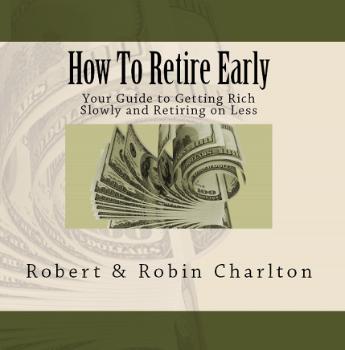

Early Retirement
| Keep Your Eye on the Big Picture |
Why peer through a peephole when you can look out a picture window? That's
what we wonder when we see investors peering through a narrow window at
just one year’s fund or market results. Whether the results are good or bad
hardly matters -- it's that the view itself is distorted by the narrow dimensions.
By looking through a bigger window at 10, 20, or even 100 years of results, the
picture suddenly becomes clearer.
It's always wise to ask yourself what window you’re being asked to look through
by any provider of financial services. This is true whether it's a website or a
mutual fund ad or an individual stockbroker. Ask yourself why they're having
you focus on THIS particular timeframe. If it's 1 year instead of 5 or 10, are
they trying to influence your decision by emphasizing only the most stellar
results over a short period of time? (Hint: yes.)
Even with rolling averages the timeframe can make a big difference. From
1997 to 2007, for example, the S&P 500 returned 8.14% on average. But if
you roll forward just one year and look at 1998 to 2008, the results change
dramatically to 0.96% on average. That’s an enormous difference based solely
on timeframe.
The beginning of the Great Recession, of course, is the culprit in the second
scenario. Two different analysts wanting to make two different points might
choose the first timeframe if they wanted to emphasize positive results, or the
second timeframe if they wanted to emphasize negative results. It helps to
understand this when looking at news or posted results from any source,
because the timeframe can alter the picture dramatically.
With regard to our own investment results, if we wanted to emphasize how well
we had done, we might choose the 15-year period from 1992 to 2006 during
which we actively invested for retirement. During that time the S&P 500
returned 10.66%. If instead we wanted to emphasize how many challenges we
had faced, we might extend the window to 2008 to include our initial early
retirement into the Great Recession. During that timeframe the S&P 500
returned 6.73%.
But the clearest and most honest picture is usually the biggest picture. With
respect to our own investment results, the longest timeframe we can examine
at present (from 1992 to 2017) shows an S&P 500 return of 9.62% – which
happens to be fairly close to the long-term historical average of 9.15%.
The bigger the timeframe the better. Let’s say you’re trying to decide what
annual percentage to use to estimate future stock market returns in your
portfolio. Why not take the really long view? Moneychimp.com has a nifty
calculator that allows you to enter 1871 as the oldest possible starting date for
the S&P 500. So if we look at 1871 to 2017 (the latest available year), we get
9.15% as the annualized return based on compound annual growth rates.
If going back to the 1800’s seems too extreme, then from 1900 to 2017 the
annualized return was 9.81%. The 100-year window (1917-2017) was 10.18%,
the 50-year window (1967 to 2017) was 10.40%, and the 25-year window
(1992- 2017) was 9.62%.
Based on these results we would recommend you use 9% as your predicted
annual return for future years. That way your slightly conservative estimate is
predicated on what might be called a widepan view of the market. When you
consider how much turmoil this timeframe has encompassed – two World
Wars, a Great Depression, a Great Recession, and much more – it’s a comfort
to realize that, in spite of it all, the stock market has still returned more than 9%
on average per year.
Taking the longest possible view over the longest possible timeframe cuts
down on the chatter from TV pundits and day traders. It makes you realize
maybe this isn’t such a gamble after all. Maybe the stock market is more
reliable over the long term than you have been led to believe.
what we wonder when we see investors peering through a narrow window at
just one year’s fund or market results. Whether the results are good or bad
hardly matters -- it's that the view itself is distorted by the narrow dimensions.
By looking through a bigger window at 10, 20, or even 100 years of results, the
picture suddenly becomes clearer.
It's always wise to ask yourself what window you’re being asked to look through
by any provider of financial services. This is true whether it's a website or a
mutual fund ad or an individual stockbroker. Ask yourself why they're having
you focus on THIS particular timeframe. If it's 1 year instead of 5 or 10, are
they trying to influence your decision by emphasizing only the most stellar
results over a short period of time? (Hint: yes.)
Even with rolling averages the timeframe can make a big difference. From
1997 to 2007, for example, the S&P 500 returned 8.14% on average. But if
you roll forward just one year and look at 1998 to 2008, the results change
dramatically to 0.96% on average. That’s an enormous difference based solely
on timeframe.
The beginning of the Great Recession, of course, is the culprit in the second
scenario. Two different analysts wanting to make two different points might
choose the first timeframe if they wanted to emphasize positive results, or the
second timeframe if they wanted to emphasize negative results. It helps to
understand this when looking at news or posted results from any source,
because the timeframe can alter the picture dramatically.
With regard to our own investment results, if we wanted to emphasize how well
we had done, we might choose the 15-year period from 1992 to 2006 during
which we actively invested for retirement. During that time the S&P 500
returned 10.66%. If instead we wanted to emphasize how many challenges we
had faced, we might extend the window to 2008 to include our initial early
retirement into the Great Recession. During that timeframe the S&P 500
returned 6.73%.
But the clearest and most honest picture is usually the biggest picture. With
respect to our own investment results, the longest timeframe we can examine
at present (from 1992 to 2017) shows an S&P 500 return of 9.62% – which
happens to be fairly close to the long-term historical average of 9.15%.
The bigger the timeframe the better. Let’s say you’re trying to decide what
annual percentage to use to estimate future stock market returns in your
portfolio. Why not take the really long view? Moneychimp.com has a nifty
calculator that allows you to enter 1871 as the oldest possible starting date for
the S&P 500. So if we look at 1871 to 2017 (the latest available year), we get
9.15% as the annualized return based on compound annual growth rates.
If going back to the 1800’s seems too extreme, then from 1900 to 2017 the
annualized return was 9.81%. The 100-year window (1917-2017) was 10.18%,
the 50-year window (1967 to 2017) was 10.40%, and the 25-year window
(1992- 2017) was 9.62%.
Based on these results we would recommend you use 9% as your predicted
annual return for future years. That way your slightly conservative estimate is
predicated on what might be called a widepan view of the market. When you
consider how much turmoil this timeframe has encompassed – two World
Wars, a Great Depression, a Great Recession, and much more – it’s a comfort
to realize that, in spite of it all, the stock market has still returned more than 9%
on average per year.
Taking the longest possible view over the longest possible timeframe cuts
down on the chatter from TV pundits and day traders. It makes you realize
maybe this isn’t such a gamble after all. Maybe the stock market is more
reliable over the long term than you have been led to believe.
